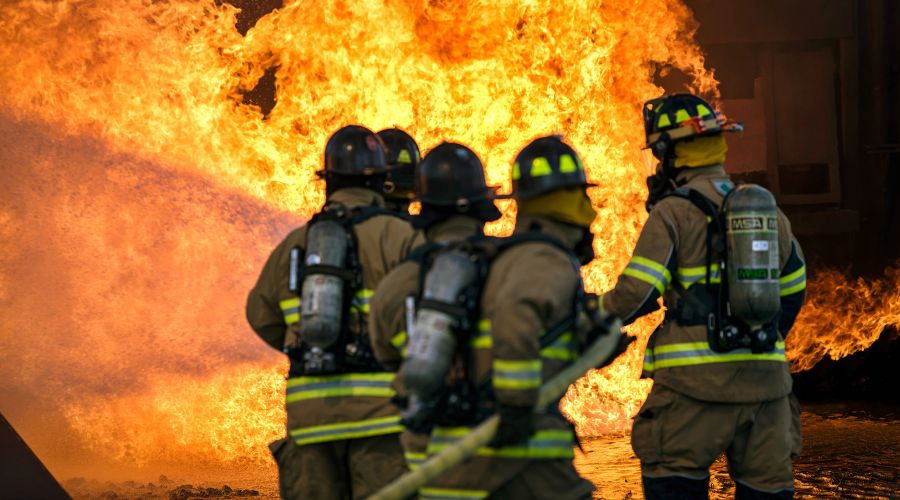Firefighters work overnight tackling fire on Scottish farm
15th April 2025
Scottish firefighters have spent the night tackling a huge fire on a farm in Fraserburgh, Aberdeenshire.

A spokesperson for Scottish Fire and Rescue Service confirmed that the force responded to reports of a fire at Philorth Farm, near Fraserburgh, after 4pm on Monday, 14th April.
Six fire appliances and specialist resources attended the scene.
The officers said: “At its height, Operations Control mobilised six fire appliances and specialist resources to the scene, where firefighters worked overnight to extinguish a fire affecting two large farm buildings.
“As a precaution, local residents are being asked to close windows and doors if they are affected by smoke. There are no reported casualties.”
Tips on how to minimise risk of fire
Fires are an ever-present risk that need to be managed and which can result in loss of farm buildings, loss of produce, injuries and can lead to fatalities.
This is why NFU has prepared five tips for farmers on how to minimise the risk of fire on a farm:
1. Secure flammable substances
Ensure flammable substances are securely stored away from the public. This can include fuel stores, fertilisers, hay and straw bales and chemicals.
In particular, bales can be a target for arson; try to keep them away from any areas of public access. If this is not possible, put in measures to prohibit public access to the bales, such as fencing.
2. Have a fire emergency procedure plan
It is a legal requirement to complete a fire emergency procedure plan and keep it in a clearly marked place in the event of an emergency.
This must include details of the responsible person(s) on the farm, muster points, evacuation routes for people and livestock, locations of flammable substances and potential sources of ignition, and locations of fire extinguishers and water sources. Information and training must be provided to all farm workers on the emergency procedures and correct use of fire extinguishers.
3. Use separate storage units
Keep flammable substances and sources of ignition in separate storage units and at least 10 metres away from livestock. Lithium-powered equipment and machines should also be taken into consideration, as these can be self-igniting.
4. Check electrical equipment
Ensure electrical systems and equipment are fit for purpose and in appropriate working order, and do not pose a fire risk. Regular inspections of electrical equipment and installations will help to identify issues. Replace or repair faulty equipment immediately to prevent fire risks.
5. Make use of local resources
Discuss with the local fire service about the prevention and emergency measures in place to ensure they are suitable and practical. Local WhatsApp groups can be useful in notifying of incidents of arson in the area to allow other farmers to manage the risk appropriately.
Read more farm safety news.

